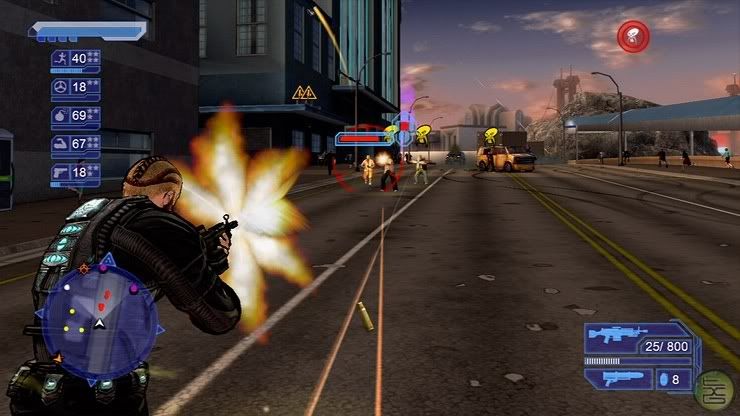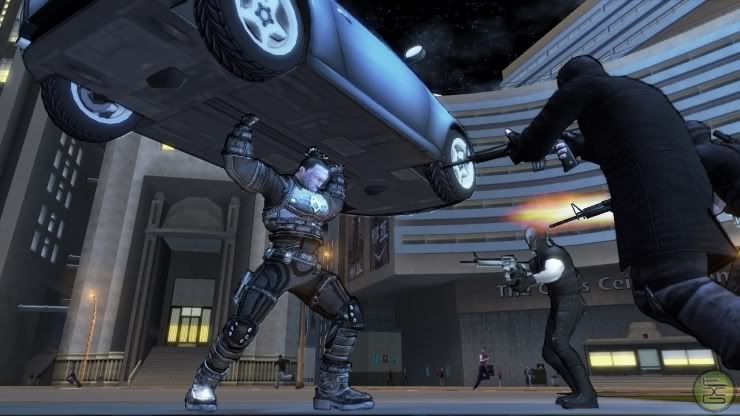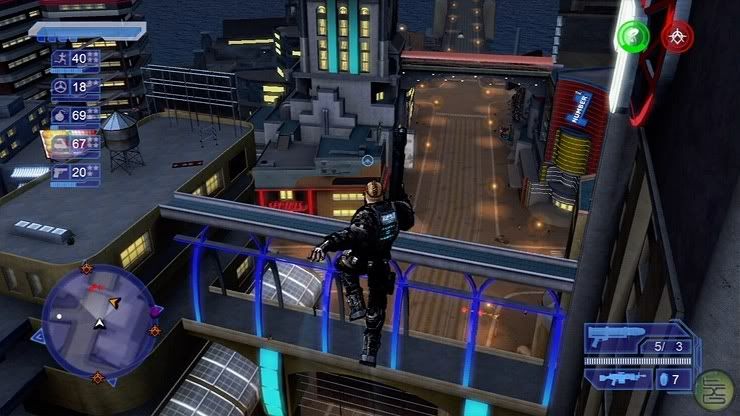Review by: Josh EndeTitle: No More Heroes
System: Nintendo Wii
Price: $49.99
ESRB Rating: M for Mature
Developer: Grasshopper Manufacture
Publisher: Ubisoft / Marvelous Interactive
Age Range: 17+
Buy?: YES! Regardless of the mature and violent tones of this game, its style and artistic value should be experienced by everyone who appreciates the creativity of video games. Perhaps it’s not a safe purchase for younger audiences, but think of it as one of those R-rated movies that you want your child to watch when they’re older.
Summary: You play as Travis Touchdown, a young guy obsessed with Japanese pop culture, and you’ve just been ranked the 11th best assassin in the world. Your goal now is to compete against, and defeat, the remaining top 10 to become #1.
Difficulty: Medium/Hard
This game is made for mature gamers and it shows in the difficulty as well. While it’s not exactly on par with the latest Ninja Gaiden games, NMH will ask you to bring nothing less than your A-game to some of the higher ranked assassins. Luckily, the style and gameplay itself will keep you from getting too frustrated and turning the system off.
Learning Curve: The learning curve is only as long as the brief training/tutorial at the beginning of the game. The button actions are far from complicated and the motion controls are too intuitive to ever forget.
Total hours of play: 10-12 hours
The linear design of NMH will keep the pace of the game fairly consistent. The only section where completion time will really vary is in between the actual missions when players have to round-up the money to pay the “set-up fee.”
Family Factor:
Although the somewhat cartoony style of No More Heroes is very appealing to audiences of all ages, No More Heroes is not a game for the entire family to gather around and enjoy. The violence and gore is on the same level as Quentin Tarantino’s Kill Bill movies and the crass humor generally revolves around sexual themes. The game also does all of this in a very non-realistic world which may confuse younger gamers.
Review:
Anyone familiar with game creator Suda 51, or Killer 7 (his last game), knows exactly what to expect out of No More Heroes: over-the-top violence carried out with a trademarked style that doesn’t compare to any other game out there (except maybe Killer 7). You play as Travis Touchdown, the 11th best assassin in the world, who wields a beam katana (lightsaber) that he won in an internet auction (eBay). There’s very little else that we know about Travis before we begin his journey to the top so he has much more of an every-man feel, but the quest he embarks on is far from an every-day affair.
No More Heroes is actually the name of a motel that Travis is living at within the city of Santa Destroy: a fictional locale with a southern-California feel to it. We never quite know the meaning of the motel’s name, nor why Santa Destroy is called as such, but we can assume that they’re just cool monikers that Suda 51 and company came up with to set-up the style of the game: very cool with little justification, and even a little satirical. The style is going to standout over the gameplay in almost every aspect of the game, and that’s not a bad thing because there’s still plenty of gameplay, but No More Heroes is a title that should forefront the argument for videogames as a form of art. By style I’m referring to the game’s visual aesthetics as well as its attitude. The graphics have a very modern, comic book-esque appearance that uses a lot of basic colors giving it an almost impressionistic look. The attitude of the game, however, is what really compliments the look. Travis could be thought of as a modern-day Japanese Fonzy with an affinity for pro wrestling and his pet cat Jeane. His style is kind of like a hipster rock star and new clothes can be bought for him to change his color-scheme, but buy too many new clothes and you’ll have to work more to pay the fee for the next battle.
After the initial, tutorial battle and introductory level, which bumps Travis up to 10th best assassin in the world, players are dropped into the body of the game. The core gameplay pattern goes as so: drive around Santa Destroy on an over-sized motorcycle doing odd jobs to raise money for the next ranking battle, pay said fee, then compete against the next ranking opponent, rinse, lather, repeat. Following the same pattern over and over again may sound like it gets boring, and it might for a few gamers, but each win as Travis climbs the top ten list will unlock new odd jobs (such as coconut collecting and lawn mowing) and new assassination missions that require players to meet objectives such as only using wrestling moves to defeat the bad guys or defeating all enemies without getting hit. The variety of these missions and odd jobs isn’t too broad so players will be repeating missions and jobs they’ve already done to earn enough money for the next battle, but the satisfying combat and controls keep these smaller missions from getting too stale.
The combat itself is very intuitive and easy to learn even if you skipped-out on the tutorial at the beginning of the game (which is an option). It won’t require players to stand up nor constantly aim the Wii remote at the screen, but it does use the Wii’s motion-sensing capabilities to finish off enemies with a swipe of the controller as well as other contextual controls that are prompted during the game. The violence is very over-the-top and very bloody, but it’s not necessarily as graphic as you might expect. Because of the art style, the gruesome deaths in NMH feel fairly watered-down. Bad guys will get limbs chopped off, get decapitated, and even get sliced in half by Travis’ beam katana, but the impressionistic style of the characters make them look a little more like paper dolls than like real people; and the blood that sprays from these fatal wounds seems more like fruit punch than human blood.
The dialogue is going to throw up another red flag. No More Heroes has more than its share of f-bombs and other seemingly inappropriate language which is used rather liberally. It’s obvious from the beginning that NMH is a product of Japan because the English translations and voice-acting will make you cringe and laugh, both in ridicule and from humor. The humor though is an interesting aspect in itself. You’ll often roll your eyes at Travis’ sexual desperation and at his corny one-liners, but that also makes it easier to see NMH as satirical.
Going along with the idea of NMH as a satire it’ll be easier to accept the over-the-topness, exaggerated action, and ridiculous dialog, but satire or not, No More Heroes is a great game. The violence, language, and some adult themes keep me from recommending it for everyone, but if movies like Kill Bill, or even the Blade series, are acceptable then Suda 51’s No More Heroes is a must-have title.
Related games: Killer 7 (GameCube, PS2), Grand Theft Auto series (multiple platforms)








